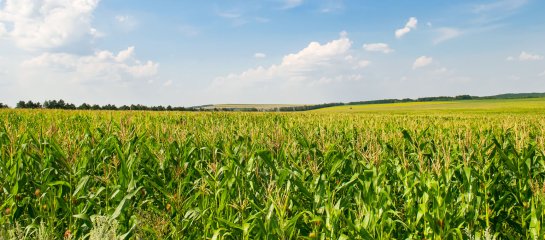In the heart of America’s heartland, where endless fields of corn still stretch as far as the eye can see, there is a quiet revolution taking root. It is a story that began with a simple statistic – the number of American households cultivating their own fruits, vegetables, herbs, and spices had swelled by a staggering 6 million in just five years, reaching a total of 42 million homes by 2021.
My own journey into this green resurgence took an unexpected turn during a trip to Iowa a few years back. I had checked into a brand-new Marriott Courtyard hotel that seemingly sprouted from what had been a cornfield not too long ago. The hotel sat like an oasis in the middle of a vast parking lot, flanked on all three sides by towering cornfields. It was a striking visual, and my curiosity got the best of me.
I decided to delve deeper into the transformation of this once-thriving farmland. What I discovered was a poignant narrative of change. Farmland in America had been steadily dwindling over the years, often gobbled up by the relentless march of urbanization. The fields that feed the nation and much of the world were slowly shrinking, yet the irony was that our agricultural methods had become more efficient and productive than ever before. It was a technological marvel, yet something felt amiss.
I realized that the resurgence of food gardening was not about replacing the vast swaths of farmland but rather about rediscovering a connection to the earth and a sense of self-sufficiency that modern life had often overlooked. As I spoke to local residents and gardeners during my stay in Iowa, their stories echoed a common sentiment – it wasn’t just about the food.
One warm summer evening, I met Mary, a retired schoolteacher, who had transformed her suburban backyard into a lush vegetable garden. She spoke passionately about the joy of tending to her plants, the thrill of watching tiny seeds sprout into vibrant life, and the sheer delight of harvesting her own tomatoes, cucumbers, and herbs. Mary’s eyes sparkled with enthusiasm as she described the simple pleasure of sharing her homegrown bounty with friends and neighbors.
Then there was Frank, a grizzled farmer who had seen his fair share of changes in the agricultural landscape. He explained that even though he had sold the family farm and retired, he’d taken up gardening at home. He proudly showed me his flourishing apple orchard, vegetable gardens, and rows of sweet corn that covered most of his 5 acre homestead. For Frank, gardening was a return to his roots, a connection to tradition, and a way to preserve a vanishing way of life.
In Iowa and across America, the rise of food gardening was about more than just vegetables and herbs. It was a testament to our enduring connection to the land, to the satisfaction of nurturing life, and to the profound joy of sharing the fruits of our labor. It was a reminder that in a world driven by technology and fast-paced living, the simple act of growing one’s own food offered a profound sense of fulfillment and connection to the essence of life itself.
As I left that Marriott Courtyard, surrounded by cornfields that whispered tales of the past and hints of the future, I couldn’t help but smile. The rise of food gardening in America was a heartwarming story of renewal, a return to the earth, and a celebration of the timeless pleasure found in nurturing life from the soil. It was a movement that reminded me that amidst the hustle and bustle of the modern world, there was always a place for the age-old wisdom of sowing, growing, and sharing the bounty of the land.
Happy food gardening, and happy eating!

One reply on “The Rise of Food Gardening in America”
I grow about 70% of the produce my wife and I eat. We also feed fresh vegetables to our two Labrador Retrievers. I grow approximately 200 different vegetables, some fruit, and 20 herbs. I also have 4 (potted) citrus trees (my meyers lemon tree is over 20 years old).
I am retired but my motivation to significantly increase my efforts stem from a mistrust of the produce in supermarkets. Americans increasingly are becoming obese because of the processed foods they eat. More stories are needed to motivate every American who can to start growing healthy food.